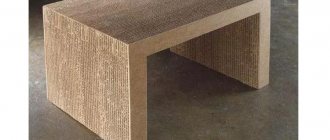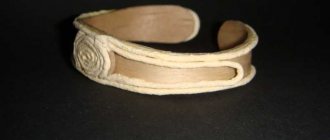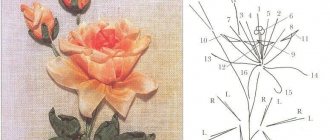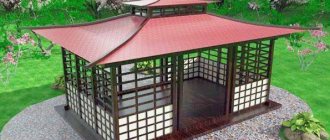Among folk craftsmen, one of the most common homemade products is a belt grinder, which is commonly called a grinder, sander.
Making the necessary parts and assembling a grinder with your own hands is generally not difficult, especially for those who have certain design skills and have the necessary tools and equipment. Depending on the goals of the home craftsman, as well as the volume and duration of grinding work, the sizes, design and materials from which a homemade grinder is made can be very diverse.
Some create machines that are practically no different from factory ones, using milled parts or a complex metal profile. Others use wood and plywood to make the frame and rollers.
In addition, on the Internet you can find many video clips in which the authors demonstrate their grinder made from scrap metal and the remains of various materials stored in the yard or workshop. In fact, what the grinder frame is made of does not matter very much.
The main thing is that it is strong enough, and the rollers are located in the same plane, have free rotation and are securely fixed. The maximum number of revolutions of the grinder drive is also very important, since its main technological parameter—the linear speed of the grinding belt—depends on this.
The parts and components necessary for this device can be made with your own hands or purchased ready-made.
Types of grinding machines
When working closely with wooden parts and objects, the craftsman needs to know what types of wood sanding machines there are in order to select the most optimal device for himself.
Based on the design principle, types of wood sanding machines are divided into 3 types: belt (grinder), disk, drum.
- The band press is considered the most common. The abrasive coated belt is mounted on two shafts, which are driven by an asynchronous motor. In this case, the grinding element can be located in a horizontal or vertical position. During operation, the tape does not sag, but processes the wood without generating a large friction force. This design can be used when processing long parts.
- The disk unit, or as it is also called a disc grinding machine, is equipped with an axis to which an abrasive wheel is attached. During operation, the disk begins to rotate around its axis. During operation, you can adjust the speed of the wheel with an abrasive coating without reducing the speed of the axis itself.
- The disk unit, or as it is also called a disc grinding machine, is equipped with an axis to which an abrasive wheel is attached. During operation, the disk begins to rotate around its axis. During operation, you can adjust the speed of the wheel with an abrasive coating without reducing the speed of the axis itself.
- The drum machine is designed in such a way that abrasive belts in the form of a spiral are wound onto adjacent rollers. In turn, these elements are spaced a certain distance from a flat surface (table top). By adjusting this distance, you can calibrate the wooden parts.
There are other types of portable sanders. Drills and screwdrivers are often equipped with special attachments with abrasive coating.
The device and principle of operation in each version is different from each other. At the same time, the wood will be processed differently.
The easiest way to create a disc sander. But a homemade sharpening and grinding machine, based on a belt design, will be much more functional and in demand in the home workshop than any other.
Types of sandpaper bases
Sanding belt for a sander is the most popular abrasive. People call it skin, as shark skins were previously used for sanding. It, just like the tape, has its own base. It’s worth taking a closer look at the most common skin bases.
- Paper. This is the most common and economical type of foundation. Such paper is impregnated with polymers to give it strength and resistance to abrasion or tearing. But it is not recommended for intensive use.
- Textile. This is an elastic base that easily takes the shape of the product. It is more stable and has a long service life, but the abrasive can crumble under tension. The fabric base of the skin is durable and resistant to moisture. It is used for intensive work with various types of wood.
- Fiber. It is used for processing hard materials.
- Combined. This is a combination of fabric and paper on which an abrasive is applied. This base combines the beneficial properties of paper and fabric. It is resistant to bending, abrasion and moisture. Such a base has a high cost.
Grinder and sharpener: a brief comparison
A belt grinder and a sharpener are analog devices, as they perform almost the same functions. But there are also differences in the quality of processing and design. The grinder has several advantages that a regular sharpening machine cannot boast of. This:
- precise processing geometry;
- simple replacement of abrasive tape;
- versatility of use.
Please note that due to the presence of a shaft and rollers, the tape becomes perfectly level. This makes it possible to more accurately position the workpiece for processing. As a result of cleaning parts, defects, nicks and burrs do not appear (this often happens when processing metal parts with a grinding wheel).
The grinder belt is made from strong sandpaper. For belt grinders, many belt options are sold with different abrasiveness. Having a whole set of them on the farm, you can perform work of varying complexity.
Disc or tape? And drive
There are almost more types of grinding machines used in industry than lathes. The emery known to all craftsmen - a motor with a pair of grinding wheels (or one wheel) - is also a grinder. For yourself at home, it makes sense to make either a disk end grinder (plate grinder) or a belt grinder. In the first, the abrasive is applied to a rotating hard disk; in the second - on an elastic band running around a system of pulleys and rollers. The disc type is more suitable for grinding simple wooden parts and coarse or medium clean metal parts. Using a belt grinder, it is also possible to produce precise and clean finishing of profiled parts of complex shapes, incl. large-sized, see below.
A disk grinder is very easily obtained from the same emery or a motor of suitable power, see below. You need to order an adapter from the electric motor shaft to the shank of a metal-based grinding disc. Or under a clamping chuck, then on the same motor it will be possible to build a mini lathe, see figure:
Homemade disk grinder
A worn-out “plate” is suitable: a disk made of thin (4-6 mm) fibrous plastic is glued to the edge of its side, and an abrasive is placed on it. How to make an end grinder, see next. video clip.
Video: homemade end grinder
The difference between a disk and tape grinder is not only in the possibilities of use. If we take ordinary household crafts, then for a disk grinder a drive power of 250-300 W on the shaft is enough. For small wooden parts - and 150-170 W. This is a motor from an old washing machine, a straight (ordinary) drill or a screwdriver. But for a belt grinder you will need an engine from 450-500 W: three-phase with batteries of starting and operating capacitors. If you plan to process large items, then the motor power is from 1-1.2 kW. Moreover, capacitor batteries for both will cost not much less than the engine itself.
A drill or screwdriver as a grinder drive is also convenient in that it allows you to quickly change the speed of movement of the abrasive (see below) using a standard speed controller. You just need, firstly, to make a holder for the drill that rigidly fixes the tool. Secondly, an elastic transition coupling from the drill to the disk shank, because It is difficult to achieve their precise alignment without special equipment, and runout will negate the accuracy of processing and can damage the drive tool.
Drawings of a drill holder for using it as a drive for a home metal-cutting machine are given on the left in the figure:
Drawings of a drill holder for driving a grinder (grinding machine)
Since shock and irregular alternating loads on the drive in a grinder are an order of magnitude lower than, say, in a lathe, the drill holder for it can be made of hard wood, plywood, chipboard, MDF, on the right in Fig. The diameter of the mounting (large) hole is along the neck of the drill. It is highly advisable to use a drill without an impact mechanism and with a steel shell on the neck (for installing the front handle).
coupling
For the adapter coupling, you will need a piece of steel rod (not necessarily turned) of the same diameter as the shank of the grinder drive shaft, and a piece of PVC-reinforced hose (garden irrigation) with a clearance such that it stretches tightly over the rod and shank. The length of the “free” hose (between the ends of the rod and the shank in it) is 3-5 cm. The length of the protruding part of the rod should be sufficient for reliable clamping in the drill chuck. After assembling the coupling in place, the hose on the shank and rod is tightened tightly with clamps; can be wired. Such a coupling completely counteracts the misalignment of the drive and driven shaft up to 1-1.5 mm.
Schematic diagram of the grinder design and the principle of its operation
In order to correctly understand the structure and operating principle of the grinder, let us turn to its structure. The main task is to find a powerful motor that will need to be equipped with a drive.
Important! The torque is transmitted to the rollers, which drive the abrasive belt.
Appearance of the grinder
So, the main elements of the grinder, in addition to the engine, are:
- Straight roller with pulley.
- Tension rollers.
- Abrasive tape.
- Base.
- A device that fixes the tension of the belt and rollers.
- Table for fixing the part (in some models it can be rotary).
After connecting the device to the network, the rollers set the abrasive belt in motion. Moreover, the position of the rollers can be shifted to control the tension of the abrasive belt.
In some cases the table can be rotated 180°
When assembling the grinder yourself, it is important to position the rollers strictly perpendicular to each other to avoid distortions of the belt, which can lead to its breaks.
Advice! Before deciding on the size of the belt and the width of the rollers, figure out what surfaces you plan to process, their dimensions and volume of work.
Characteristics that a belt for a sanding unit must meet
Selecting an abrasive strip is an important step when assembling a mini-grinder with your own hands. First of all, you need to decide on the length of the tape and its width. The geometric parameters of the strip are influenced by two main factors:
- grinder dimensions;
- purpose of the unit.
Fabric base withstands surface tension better
Endless abrasive strips are also classified into grit types. The length of the sanding strips can be different (from 610 to 1830 mm). Such tapes have a width of 50 or 100 mm. The first option is most often found in units assembled by hand at home.
A high-quality abrasive strip must have an elastic fabric base
When choosing the right tool, you also need to pay attention to how many revolutions the strip can withstand. It is recommended to purchase products that can operate at 1500 rpm. This option is best suited for making a do-it-yourself belt grinder
The drawing drawn up earlier must contain information about the dimensions of the abrasive strip and its other characteristics
This option is best suited for making a belt grinder with your own hands. The drawing drawn up earlier must contain information about the dimensions of the abrasive strip and its other characteristics.
A good tape must have high abrasive resistance. The wear resistance of the tape depends on this indicator. For homemade machines, it is recommended to use belts whose length is no more than 123 cm. The abrasive strip must not only be resistant to wear, but also have good resistance to high temperatures generated during friction against the workpiece during operation.
It is worth noting that short-length tapes are much more susceptible to wear than longer products.
Experts advise paying attention to pictures depicting finished products. Photos of the machines allow us to answer the question of how to make a grinder with your own hands. The drawing of the device can be significantly simplified if ready-made elements purchased separately are used in its assembly
The design of the device can be significantly simplified if ready-made elements purchased separately are used in its assembly.
The speed and quality of product processing depends on the choice of tape.
And finally, special attention must be paid to the place where the abrasive tape is glued. The junction of the two ends of the strip should be as neat as possible, without any defects or protrusions
How to glue the tape for the sanding unit yourself
Belt grinders contain a spring, which performs a very important function: it tensions the belt that has sagged due to wear. The belt is changed several times even when processing a small workpiece. This should be remembered.
When assembling a grinder with your own hands from plywood or metal, you can make an abrasive strip yourself. Gluing such tape is a complex undertaking that does not tolerate mistakes. There is a lot of advice on the Internet on how to properly glue tape, but many of them are incorrect.
The gluing process is as follows. First you need to select a fabric-based sanding material. Then you should prepare both ends of the abrasive strip. To do this, they are cleaned. The seam on the strip is made exclusively using the butt method. Experts definitely recommend reinforcing the glued tape from the inside with a thick strip of fabric, which is fixed with a special adhesive composition.
Gluing tape is a complex process that does not tolerate mistakes.
In order to connect the ends of the abrasive strip, you need to purchase a special adhesive composition. The best option is to use elastic glue. There is no point in saving money, since cheap products, as a rule, are not of good quality.
Before gluing, it is necessary to prepare a strip for sanding tape. A do-it-yourself grinder (from scrap materials) needs a reliable abrasive strip, which is difficult to do at home. The process is carried out using a glue stick, which is installed on hot-melt guns. First, the composition is heated. To do this, you can use a regular hairdryer, which is found in every home.
Advantages and disadvantages
The advantages of grinding machines include:
- Quality and speed of processing.
- High performance.
- The ability to obtain the surface of the desired roughness.
- The ability to process not only the wood itself, but also pre-grind the finishing layer.
The disadvantages are:
- Release of a large amount of dust, requiring the organization of a dust removal system.
- Large quantities of consumables (abrasive) of several sizes.
- Difficult to manufacture and maintain (this especially applies to belt installations).
Considering the existing shortcomings, before starting assembly, you need to decide how necessary the machine is. If it will be used only occasionally, it is not practical to spend time on manufacturing - you can get by with hand tools.
Principle of operation
This type of grinding machine is called so because a cloth of sandpaper, which looks like a closed belt, is attached to the tool rollers. When the rollers rotate, the web moves continuously. As a result of this movement, various surfaces are quickly and efficiently polished. It is advisable to use a belt grinder for processing large areas, since it has high productivity. Modern mechanisms have adjustable belt speed.
Advantages of a homemade machine
A belt grinder can be purchased at any hardware store, but a hand-assembled machine has many advantages for the owner:
- Minimum costs for labor and materials.
- The ability to independently prepare a drawing (or use a ready-made project) with the proper dimensions, type of design and principle of operation.
- Most consumables are available in every craftsman's household; you just have to search in your own barn, pantry, or garage.
- The missing elements and accessories can be purchased at a construction supply store (fastening clips, guide and drive rollers, sanding belt). You can also make rollers for the grinder yourself.
- A large collection of videos on assembling a grinder with your own hands from scrap materials.
Masters are always presented with web portals with a large number of step-by-step instructions on how to make a grinder with your own hands, diagrams and ready-made drawings, and practical advice.
Assembly of the finished structure
Further operation of the structure depends entirely on the quality of the assembly of the machine (mini-grinder) with your own hands. In his work, the master must take into account absolutely all the details, the smallest details and subtleties of assembly. Instructions on how to make a grinder with your own hands at home:
The first to install is the frame on which the belt for sanding parts and surfaces will be located. Most often, this is a metal plate that can withstand significant loads (vibration, mechanical stability).
Note!
- DIY vices: simple and reliable homemade vices from A to Z (190 photos)
- Do-it-yourself vibrating table - selection of materials, components and assemblies for a vibrating table with a step-by-step manufacturing description
Do-it-yourself grain crusher - operating principle, types and features of creating a device for processing grain crops
Two rollers are attached to the side surface of the frame: a guide roller and a drive roller. One of them should be significantly larger in diameter, which makes the rotation of the belt more efficient.
Along the side contour of the frame, it is necessary to make a bed for the drive: this is a small platform that reliably holds the motor while the sanding belt moves. Most often, the platform is made of metal, complemented by sides and internal rubber gaskets, which reduce the degree of vibration.
Connect the drive to the drive roller, check the speed and quality of rotation of both rollers (if there are gross defects, they can be eliminated at this stage).
A small platform is mounted on the front surface of the grinder, which helps to hold the workpiece. Also, do not forget about additional clamps.
Working with sanding most materials involves the risk of damaging the eyes and skin of the hands, so be sure to install a protective screen (most often made of acrylic). The master will be helped by ready-made drawings with the dimensions of the grinder for doing it yourself.
Possible uses of the grinder
An installation of this type, industrial or homemade, has several main areas of practical use. A well-assembled structure can be used in the following cases:
Processing of metal sheets after cutting (for example, additional processing of sheet iron before assembling a certain structure). Using a grinder belt allows you to get rid of sharp nicks, scale, and irregularities.
Sanding wooden surfaces in the manufacture of furniture (or its restoration), picture and mirror frames. All wood parts can be processed with a plane, but the quality of sanding in this case depends entirely on the skills and practical skills of the craftsman.
When using a grinding machine, a belt moving evenly along the axis produces high-quality processing, removing all roughness, nicks, and sharp knots.
Sharpening knives and scissors. Very often you have to deal with the problem of a dull kitchen knife or textile scissors. This issue is especially relevant for seamstresses who operate from home. In such cases, having a sanding machine on hand will be an obvious advantage.
Today there is a wide variety of professions and hobbies. Most of them require specialized tools, including a grinder.
You can assemble a machine of this type with your own hands, using step-by-step instructions and a series of video tutorials. Drawings with dimensions and videos on assembling a grinder with your own hands can be found on practical construction web portals.
Homemade mechanisms for angle grinders
In order not to look for ready-made attachments, you can try to make them yourself. There are different options for making such devices, which will be discussed below.
From plywood
First of all, let's consider the option of how you can make a simple grinder from an angle grinder with your own hands. The simplest version of a grinder is made from an angle grinder, two rollers, a tension mechanism and a plywood base.
The most difficult part of this design is making the rollers. It’s good if your home workshop has a milling machine or a hand router. To do this, a suitable blank is turned from plywood with a milling machine, processed on a grinding machine, and bearings are pressed into place.
A base is cut out of the same plywood, in which a hole is cut for the grinder. Places for the rollers are marked, after which the angle grinder is secured and the wheels are mounted. You must first treat the sanded wheels with varnish. After this, the entire system is assembled, and the grinder is ready for use. The design of the device is clear from the presented photograph.
Sheet metal
If the workshop has a welding machine, and a turner you know can grind out the necessary rollers, then you can make a polishing machine from leftover metal.
Such a device will be no worse than the factory one. It will take a lot of time to make, but it's worth it. Before you start work, you need to develop working drawings or download them from the Internet. By assembling a mechanism not according to the drawings, you may not achieve the desired result, or the resulting device may turn out to be a source of increased danger.
First of all, it is necessary to accurately mark the bed. As an example, we use the following device drawing:
Using a milling and drilling machine, drill holes according to the markings. Then you need to prepare the tension bar, as shown in the photo.
Grind the rollers, and only then begin assembling the mechanism. The result is a universal attachment, as the power unit of which you can use not only an angle grinder, but also another suitable electric motor. The finished look is shown in the photo below.
From the remains of a professional pipe
Having the skills of a welder, you can easily convert the grinder you have in your home workshop into a grinding machine. Enough for this
- weld scraps of a corner or square pipe in the shape of the letter y;
- Attach suitable rollers to the ends;
- Screw the drive shaft to the shaft of the angle grinder;
- mount the sanding paper, and the device is ready for use.
This grinder can perform various operations:
- clean up metal irregularities after welding;
- perform complete grinding of the part;
- process wooden products;
- carry out final, finishing processing before coating the part with varnish;
- handle uneven concrete walls.
Grinder “from Chapai” - a brief overview
Grinders from Andrey Chapai have already become a household name. Hundreds and thousands of samples of grinding machines “from Chapay” have settled in the workshops of craftsmen in Russia and neighboring countries. The peculiarity of GCs (grinders from Chapai) is that they are universal and are created based on the needs of the customer: for sharpening knives or processing wood, with or without a certain type of engine. There are both mobile versions for home processing of products, and professional models.
Grinder “from Chapaya” is a universal machine for processing complex-shaped products made of metal, plastic and wood
You can buy a product, as they say, “turnkey”, or you can choose a modest set of tools and equipment.
At the moment, the most popular models of MGs are: GC-10, GC-12, GC-16 (professional series), as well as new mobile versions of the grinder 610 series GC610-63 and GC610 -71" - manufactured with zinc coating
General points characteristic of all machines:
- All mating surfaces of the grinder are polished. This helps to eliminate distortions during the running of the belt.
- Grinders come without painting or coating. The surfaces of the MS (short for grinder from Chapai) work for sliding. To prevent corrosion of the product, it is enough to periodically wipe it with a special oil or silicone spray.
- Unique pressure pad design.
I would like to dwell on the last point in more detail. The master came up with a unique design for this platform with the same size of 165x50 mm, there are 2 rotation positions for the base and two stop positions for the frame.
Options for rotating the pressure table and attaching it to the stop
Additionally, the set of tools and equipment includes a wheel for installation instead of the drive roller. It is recommended to be used when working on metal, when large amounts of paint or rust have to be removed.
Turning wheel with polyurethane coating, it is very convenient when adjusting and grinding concave slopes of products
Let's take a closer look at one of the professional models. The GC-16 is made on a reinforced rotary frame with 2 racks made of 12 mm thick sheet, which provides the necessary rigidity and allows you to quickly move the grinder to a vertical or horizontal position.
Grinder “from Chapai” – GCH -16. Appearance:
The design uses an enlarged sanding belt - 1600−1800×50 mm. And a fairly powerful engine - 2.2 kW. The machine has higher productivity and is ideal for continuous work in large industrial production. The price of such a product currently varies from 55,000 to 60,000 rubles.
Manufacturing process
For the manufacture of power parts of the machine, it is necessary to use sheet metal 10 mm thick. To draw the contours of such parts for their further cutting, you can refer to the drawing. There is no need to follow the dimensions exactly, since only the dimensions of the parts that you are going to process on the belt grinder will depend on them. You can draw the outlines of the parts on a sheet of metal with a marker, and use a grinder and a jigsaw to cut them out. It is much easier to cut out such parts using a plasma cutter, but not everyone has such equipment at home.
Base, machine body parts and engine before assembly
To make the base of your homemade grinder more reliable, it is better to use a 12 mm thick sheet of metal for its manufacture. You can use screw connections to assemble the grinder base, but then you will have to drill a lot of holes, which will significantly weaken the entire structure. It will be much easier and more reliable to assemble the base of your machine using electric welding.
The semicircular grooves on the parts of the belt grinder, which ensure the rotation of the platform on which the rollers are placed, will require a lot of time. To make such grooves yourself, you will need to tinker with a drill, cutters and a file, and also use a drill. You can make your task much easier if you entrust the making of such grooves to a qualified milling machine operator.
Model of the machine made of plastic: thanks to the rotating unit, the grinder can be in a vertical position...
To make the rollers of your homemade mini-machine, it is best to use titanium or duralumin (D16). If it is not possible to find blanks made from these materials, then steel can also be used, but then the rollers must be made as light as possible by choosing metal from their inner part. To make rollers for a homemade machine, you will need the help of a qualified turner, just make sure to prepare a drawing for it.
In any case, the largest roller of the belt grinder, which will be fixed on the electric motor shaft, will need to be made of steel, since a titanium blank of this diameter is very difficult to find, and duralumin may not withstand significant loads. For the entire homemade machine, you will need to make 4 rollers, the dimensions (diameter) of which are: drive roller - 150 mm, tension roller - 100 mm, two small ones - 70 mm. If you are going to make a mini-machine, then the diameters of the rollers may be smaller.
...as well as horizontally
When you assemble your homemade machine with ready-made rollers, it is very important that they are positioned strictly in one line. Otherwise, you will constantly experience tape jumping off.
The width of the rollers depends on what size sanding belt you intend to use on your equipment. When you make a drawing for the manufacture of rollers, be sure to keep in mind that they must be barrel-shaped, this will ensure that the sanding belt is securely held on them during operation. In order to give the rollers this shape, a small bevel is made from each edge: 1–2 mm.
The finished rollers of your homemade belt grinder should have a smooth surface; you need to tell the turner who will make them about this. The bearings on which they will rotate must only be of the closed type, otherwise they will quickly become clogged with dust generated during the operation of the grinding machine. In order for your homemade equipment to work for a long time and without failures, you must choose bearings for it that have a class of at least 6. The rollers of the grinding machine rotate at high speed, so the bearings for them must be of very high quality.
Ready-made grinder in a horizontal position with an additional table
Do-it-yourself grinder at home - text and video instructions
Now let’s look at step-by-step instructions for making a grinder with your own hands.
Homemade grinder with a washing machine engine
| Illustration | Description of action |
| To operate, you will need a regular asynchronous motor from an old washing machine. | |
| To operate, you will need a regular asynchronous motor from an old washing machine. | |
| We weld two steel plates to the motor, with washers on them. The fasteners will help us install the motor firmly and safely on the frame. | |
| To work, you will also need an abrasive belt, in our case - 610x45 mm (the width was cut to fit our rollers). | |
| To work, you will also need an abrasive belt, in our case - 610x45 mm (the width was cut to fit our rollers). | |
| We will need lugs, a bolt and a roller to create a regulating mechanism to control the position of the rollers during operation. | |
| We begin welding the roller fastening mechanism. | |
| We begin welding the roller fastening mechanism. | |
| We weld a metal sheet with a slot for the motor to the frame. | |
| On the other side of the structure we attach a metal corner to firmly fix the engine. | |
| On the other side of the structure we attach a metal corner to firmly fix the engine. | |
| We install a bowl-shaped pulley on the motor shaft; it will be fixed to the keyed phase. | |
| We grind the rollers with spacer bushings in advance and install bearings in them. | |
| We grind the rollers with spacer bushings in advance and install bearings in them. | |
| Based on the tension of the tape, we try on the installation location of the retaining mechanism for the driven roller, mark the fastening points, and align the structure so that the tape is sufficiently tensioned. | |
| We drill a hole for fastening the bolt, which will hold the entire structure in the future. | |
| We drill a hole for fastening the bolt, which will hold the entire structure in the future. | |
| The bolt will allow for more precise adjustment of belt tension in the future. | |
| Our bolt allows the structure to function like a pendulum, which means it is easy to control the tension of the sanding belt. | |
| Our bolt allows the structure to function like a pendulum, which means it is easy to control the tension of the sanding belt. | |
| And with the help of this handle with a bolt, we can adjust the position of the rollers relative to each other, and this can be done even while the machine is running. | |
| To adjust the tension of the tape, furniture gas pressure is used. |
A grinder of this type will easily help sharpen dull drills or small ones.
Grinder for drill
A grinder for a drill is a special attachment that can be made in several stages. There are hundreds of options for what it could be. We chose a non-standard model.
| Illustration | Description of action |
| To work, you will need a shaft with gears, bearings and sheet metal. | |
| To work, you will need a shaft with gears, bearings and sheet metal. | |
| We cut out two plates measuring 110x250 mm. | |
| We drill the necessary holes on each of the plates. | |
| We drill the necessary holes on each of the plates. | |
| In this part the bearings will be fed for adjustment. | |
| Next, take the “hairpin” and cut it into 120 mm pieces. | |
| Next, take the “hairpin” and cut it into 120 mm pieces. | |
| We install homemade rollers on the studs and secure them with bolts. | |
| We stretch the tape and fasten it on the other side. | |
| We stretch the tape and fasten it on the other side. | |
| We make a base for attaching the grinder. | |
| We attach the grinder to the frame, and fix the drill with clamps. | |
| We attach the grinder to the frame, and fix the drill with clamps. | |
| Don't forget to sharpen the corner for convenient fixation of the knife during sharpening. |
Such grinders can help sharpen knives or any flat parts.
Do-it-yourself grinder from an angle grinder: drawings
Grinder drawing with dimensions for self-assembly
Grinder for an angle grinder: appearance and main elements
This is one of the simplest grinders that you can make yourself. The design of such a mechanism is intended primarily for cleaning weld seams. However, if it is firmly mounted on a table, it can be successfully used as a sharpening machine for straightening cutting tools or sharpening knives, axes, etc.
Do-it-yourself grinder from a grinder
| Illustration | Description of action |
| All you need to do is find a grinding machine, for example, like this one. | |
| All you need to do is find a grinding machine, for example, like this one. | |
| Next, we assemble the structure - the base for stable and safe mounting of the machine. Below we strengthen the structure with corners. The main thing is not to forget to provide a hole for the wire. | |
| The top is not very important, however, a dust canopy can be attached here in the future. | |
| The top is not very important, however, a dust canopy can be attached here in the future. | |
| And so our grinding machine turned into a grinder for sharpening knives and metal structures. |
Video: scrap metal grinder
How to glue a “cobweb”?
The adhesive composition, applied to the tape on both sides and placed between the fabrics, is melted by the iron during the ironing process. The two wrong parts of the product are connected to each other, gluing to the tape on both sides. This is not difficult to do. The tape is simply inserted into the fabric pocket, which is formed by the wrong surfaces when hemming the bottom of the trouser leg, and ironed. The exposure temperature must be high enough . Only under this condition does the web melt. If something does not work out and gluing does not occur, you should spray the tape with water and repeat ironing.
This is truly the fastest way to hem products. It has many advantages, but this technology also has a disadvantage - the tape will only last a few washes. Having weighed all the pros and cons, we get to work if the positive aspects outweigh the scales.
What to use? Preparation
For work, prepare the following tools:
- Centimeter - measure the length of the side and internal seams of the product;
- Ruler – mark straight lines for gluing;
- adhesive tape - connect the edges of the bottom of the trousers;
- scissors - cut off excess fabric and cobwebs;
- chalk or a piece of soap - apply markings to the hem and cut areas;
- pins - pin up the bottom of the folded product;
- iron - melt the tape;
- ironing board - for carrying out all work on its surface;
- a piece of cotton fabric - for safe ironing.
How to hem trousers using adhesive tape?
Let's try to glue a mesh web with paper. It will be easy to work with her. The technology itself is simple:
- Adhesive tape is applied to the wrong side of the fabric along the marks with the paper facing up and ironed until it sets with the material;
- after this, the paper layer is carefully removed and removed;
- a strip of glued tape remains;
- the next part is applied and ironed;
- if the parts do not adhere to each other, they are sprinkled with water and ironed again.
The web is not used for hemming the bottom of both very thin and very dense fabrics, as well as knitted and brushed fabrics. She will stretch thin material, she will stretch herself with knitted material, but she won’t even be able to join the rest.
Preparing the trouser legs
Before gluing the tape, the trousers need to be shortened. This process is demonstrated step by step:
- put on your trousers and straighten them at your waist and hips. Pin the bottom with pins, giving the product the desired length;
- take off your pants, lay them out on the table, carefully smoothing the place of the future hem with your hand. Check that all the needles are pinned correctly and evenly;
- Mark the fold lines with a small piece of soap or chalk. In this case, the hem line must be perpendicular to the side seam;
- after 4 cm from the intended straight line, step back down and draw a line parallel to the first one;
- cut off the excess fabric of the trouser leg according to the second marking;
- now you need to lay out the product on the table so that the reduced part is the top and serves as a model for cutting off excess fabric from the bottom;
- before shortening the other trouser leg, it is important to align all the side seams from the very top to the bottom , align them and only after that mark the line for cutting off unnecessary material;
- shorten the remaining trouser leg.
Rotary table for grinder
For accurate and uniform grinding, the part must be rigidly fixed in relation to the moving abrasive belt. Therefore, any grinder includes a rotating support table (or, as turners call it, a “handle”).
Usually this is a flat metal plate 15÷30 cm long, 5÷10 cm wide and 5÷10 mm thick. The table should have a recess at the end to fit the width of the belt, an adjustable tilt towards the grinding plane, and also move back and forth and up and down.
Some support tables have the ability to rotate 90 degrees to the right and left, but the master must decide how necessary this option is. Moreover, its implementation on home workshop equipment can be quite complicated.
In foreign videos, craftsmen widely use rectangular pipes and various shaped profiles to make homemade grinders. This simplifies both the design and manufacture of the machine. Our craftsmen use such materials much less often: they mainly use channel, strip and corner.
Of course, you can refer to the difference in price, but the grinder requires very little metal, so this explanation is questionable.
Drawings of a belt grinder. Full set with dimensions
In this article we present you with a complete set of drawings with all the overall dimensions of our belt grinder for a 915mm long sanding belt.
This grinder model is intended for a small workshop or for semi-professional use. The belt grinder is mounted on AIR 71B2 engines with a power of 0.75 kW/1.
1 kW, as well as for AIR 63B2 engines with a power of 0.35 kW/0.55 kW in a flange version.
Contents of the belt grinder kit Host for self-assembly
| List of the main set of working drawings for the MG-915 belt grinder OWNER. | ||
| Sheet | Name | Note |
| 1. | Common data. | |
| 2. | Belt grinder frame. | |
| 3. | Support mechanism. Retractable crossbar. The table plate is retractable for the belt grinder. | |
| 4. | Support table. Thrust plate, belt grinder ears | |
| 5. | Belt grinder drive pulley. | |
| 6. | Straight belt grinder roller 2 pcs. | |
| 7. | Roller barrel of a belt grinder. | |
| 8. | Rolling bushing for belt grinder. | |
| 9. | Threaded axle of belt grinder 4 pcs. | |
| 10. | Assembly view 1. | |
| 11. | Assembly view 2. | |
| 12. | Assembly view 3. |
The main elements of the belt grinder (retractable crossbar, main frame and rotary mechanism) are cut from metal 10 mm thick. We recommend assembling the material of the frame and main elements of the grinder from metal with a thickness of 10-12mm; to make the structure lighter, aluminum of a similar thickness is also suitable.
For this, we recommend using laser or waterjet cutting; a plasma cutter or milling machine is also suitable.
Drawing of a belt grinder frame
In the absence of access to this equipment and a certain experience and perseverance, using the basic dimensions in the drawings, you can assemble a belt grinder with your own hands using an angle grinder for cutting metal and a drill for drilling holes. The easiest way to transfer grinder drawings to blanks is to print them in 1:1 format and glue them.
Drawing of the crossbar and frame of the belt grinder
The material of the belt tensioner mechanism for the grinder is made of 8 mm thick steel. To assemble this unit, you will need M6x1 taps, holes with a diameter of 5.2 mm, in the drawing for a 6x1 thread. We recommend lubricating the rubbing elements with any available technical lubricant. For further stable operation of the grinder belt tensioner, it is recommended to lubricate it regularly.
Drawing of the belt grinder tensioner
The support table and thrust platform of the Host belt grinder are made of 6 mm thick steel using welding and subsequent grinding of the seams. You will also need an M8x1.2 tap; the holes for this thread are marked with a diameter of 6.8 mm. As a thrust element of the grinder, we recommend using porcelain tiles; they have proven themselves better than high-alloy steel or cast iron, because... its density and durability are higher.
Drawing of a table for a belt grinder
It is best to entrust turning work to an experienced turner, because... The rollers and pulley of the belt grinder are high-precision parts, difficult to manufacture and require the use of turning equipment and various types of cutters, as well as a band saw for cutting workpieces. This is the main element of stable operation, smooth running of the grinder belt and safe operation of your machine. All dimensions and tolerances of grinder rollers are indicated in the following drawings.
Drawing of the belt grinder tensioner bushing Owner
To assemble the grinder rollers, you will need 6000RS bearings, 6 pcs. In case of imprecise turning, I recommend gluing them onto thread sealant, this will allow them to last longer and avoid unpleasant situations with collapsed rollers. We use CNC turning on our machines, which allows us to produce parts with an accuracy of .01 millimeters.
For a better understanding of assembling a belt grinder with your own hands, below we attach assembly drawings and views of the assembled grinder.
Assembly drawings of a belt grinder
Assembly drawing of a belt grinder (View 1)
Assembly drawing of a belt grinder (view 3)
Assembly drawing of a belt grinder (view 2)
All the fasteners used for assembling the belt grinder with your own hands are laid out in the specification file.
Specification of fasteners for the drawing of the belt grinder
- Thank you for reading this material, we are posting a link to the drawings of the “Host” tape grinder in vector format for printing in good quality as a separate file
- Belt grinder drawings in dwg format with dimensions
- Send us your suggestions, questions and wishes by email, we will be happy to discuss or help with any questions you may have.
- Call, write!
How to make videos
Preparing videos for the grinder is one of the most labor-intensive stages of work. For a grinding machine, most often, four rollers are made with different sizes - from 70 to 150 mm. Typically steel, titanium or duralumin are used. It is also possible to turn parts from wood.
Drawing of a homemade turnkey grinder
Important! When turning, it is necessary to give the rollers a “barrel” shape so that they do not fly off the belt.
How to choose a ribbon
There are a lot of grinder models, but the most popular option is the band grinder. When choosing a sanding belt, you should focus on a number of criteria:
- The purpose of the grinding machine (processing wooden surfaces is very different from processing metal parts, artificial or natural stone).
- Required belt stiffness.
Carefully choose not only the type of sanding belt, but also its width. Videos, drawings, tips on choosing a belt and assembling a grinder with your own hands will help you optimally carry out your independent work.
Tension mechanism and how it works
Sanding belt is often used as a blade for grinders.
Another detail that must be present in a grinder made from a belt sander is the tension mechanism. It is made of bearings and a profile pipe with a diameter of about 20 mm. This element is needed to control the belt tension during operation. It is with the help of this mechanism that the tape is weakened and strengthened.
How to position the machine correctly
After a final check of the operation of the grinding machine, it should be optimally placed in a workshop or garage. In this case, you should pay attention to a number of parameters:
- Convenient working area near the machine. The processed part needs to be placed somewhere.
- Distance to the outlet and length of the network cable.
- Convenient tabletop height for long-term work of the master.
- Possibility of protecting children from the working structure (height, protective casing and screen).
- Availability of light sources and their location (above the grinder or on the side of the structure).
When choosing an installation location, they also focus on fire safety requirements. There should be no flammable liquids or surfaces near the installation.
Setting up and checking the grinder in action
After completing the assembly of the entire structure, we begin to tension the tape. When rotating, it can move along the rollers to the left or right. To eliminate this phenomenon, we rotate the driven roller around its axis by both nuts until the tape stops moving to one or the other edge. Thus, we will find a position when all interacting elements are in place. Now we can safely turn on our homemade product and process the metal object. We make sure that the processing proceeds normally, without jerks or impacts, and we are quite satisfied with the result.
Manufacturing of main parts
At the next stage, you will need to drill a hole in a small metal plate, then cut an M12 thread with a tap. Screw the bolt into the hole. We scald it in a circle, then cut off the cap.
Or you can immediately cut off the head of the bolt, make a chamfer, screw it into the hole flush with the plate, and boil it.
Next, cut off a small part from a round metal pipe of suitable diameter. Make a small notch in the M10 coupling and weld it to a piece of pipe.
Cut the extended nut in half. You can also simply use two regular nuts of suitable diameter.
Next, the author proceeds to manufacturing the secondary shaft adjustment unit. The loop can be made from an M6 coupling and two nuts.
The platform with the secondary shaft needs to be modified a little - remove the threads in one nut using a drill. We also remove the threads in the welded coupling with a drill.
Ready-made machines from the store
Grinder "Lefty"
Characteristics: motor – 1.5 kW, belt length – 1250 mm (up to 1600 mm); The model is interesting for its additional equipment (wheel, contour), which is included in the kit.
Appearance of the “Lefty” grinder
Grinder-sharpener “Kraton” BG 14-05
Characteristics: the device is used for sharpening metal tools and wooden parts; power consumption – 2 kW, movement of the sanding cloth – 14 m/s; disc diameter – 150 mm; tape width – 50 mm. Features: rigid cast base, adjustable stops and protective screen.
Model cost from 6,000 rubles Grinder-sharpener “Kraton” BG 14-05
Grinding machine BISON ZShS-330
Characteristics: machine type - disc-and-belt; circle – 125 mm; speed – 2950 rpm; tape size 762 mm × 25 mm; power - 330 W; belt speed – 810 m/min. Cost – 5490 rubles.
Grinding machine BISON ZShS-330Grinding machine BISON ZShS-330
Sharpener METABO DS 125
Characteristics: sharpener type - with sanding belt; circle - 125 mm × 20 mm × 20 mm; circle diameter - 125 mm; circle thickness - 20 mm; landing diameter – 20 mm; speed – 2980 rpm; power - 200 W. The cost of the model is 7679 rubles.
Sharpener METABO DS 125Sharpener METABO DS 125
Sources
- https://lesoteka.com/instrument-i-oborudovanie/shlifovalnyj-stanok-svoimi-rukami
- https://m-strana.ru/articles/chto-takoe-grinder-i-dlya-chego-on-nuzhen/
- https://homius.ru/grinder-svoimi-rukami-chertezhi.html
- https://tehno-gid.net/sad/shlifovalnyj-stanok-po-derevu-svoimi-rukami.html
- https://svoimirykami.guru/grinder-svoimi-rukami/
- https://HouseChief.ru/kak-sdelat-grinder-svoimi-rukami-chertezhi-s-razmerami.html
- https://vopros-remont.ru/elektrika/grinder/
- https://WikiMetall.ru/oborudovanie/grinder-svoimi-rukami.html
- https://SdelaySam-SvoimiRukami.ru/5627-samyj-prostoj-grinder-bez-svarki-i-tokarki-iz-dvigatelja-stiralki.html











